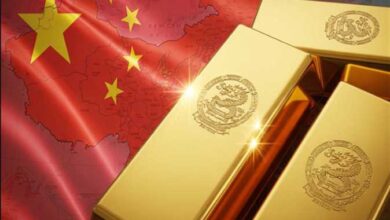
China's extravagant display of military might at its largest airshow this week, overlooking the disputed South China Sea, comes as Beijing seeks to leverage that clout on world markets.
And the throngs of foreign delegations at Airshow China in the southern resort of Zhuhai indicate China is succeeding – even as tensions ratchet up in the region.
Better technology, more reliable weaponry, and diplomatic rapprochements with countries like the Philippines are cranking up the appeal of Chinese military kit in its own back yard.
The biennial event, a showcase for Chinese and some foreign defense equipment, captured global attention with a debut flypast of the J-20, China's newest stealth jet, though this is not thought to be for export.
"In 2014, our display was 5,300 square meters (more than 57,000 square feet) and it was crowded; this time it's 8,000 square meters, and it feels just as crowded," said Wei Lin, deputy director of research and development at China North Industries Corp (Norinco).
China's biggest arms maker unveiled a new VT-5 lightweight main battle tank, targeting developing countries lacking infrastructure such as bridges able to support heavier vehicles.
IN TO AFRICA
Such a strategy has seen China emerge as Africa's dominant supplier, with arms sales primarily "in conjunction with economic aid and development assistance" to support foreign policy goals such as securing access to resources, a Pentagon report said in April.
"They are clearly targeting Africa … with near-Western quality equipment at a fraction of the price," said Sash Tusa, aerospace and defense analyst at UK-based Agency Partners.
Aircraft giant AVIC (000768.SZ) displayed a map ticking off sales in Africa, reflecting broader diplomatic efforts to strike partnerships there and secure access to raw materials.
China's export drive comes after it invested billions of dollars in developing its homegrown weapons industry to support ambitions in the South China Sea and conquer foreign markets.
Its weapons remain relatively cheap and have fewer political strings attached, the Pentagon study noted.
They also fit a gap between suppliers unable to sign deals for political or legal reasons: drones, or unmanned aerial vehicles (UAVs), are a prime example.
"China in the last 36 months has done really well exporting tactical UAVs," said Ben Moores, a senior analyst at IHS Markit.
That market is dominated by Israel followed by the United States. But Israel can't export to the rest of the Middle East, and U.S. products are subject to tight export restrictions.
"There's a gap in the market for someone with off-the-shelf equipment … for urgent operational requirements," Moores said.
AT A COST
But China's expansion comes at a price.
The Stockholm International Peace Research Institute, which monitors the arms trade, has called some of China's sales to authoritarian states in Africa "questionable". And after targeting countries that the West refuses to do business with, China has large unpaid bills in Venezuela.
Many countries want a stake in assembling the equipment, which China doesn't traditionally provide, depressing the return it gets on its $8 billion research bill, Moores said.
The annual value of China's defense equipment exports has risen 10 percent in the past five years, to $1.6 billion. But it fell as a proportion of a rising R&D budget to 19 percent from 24 percent, according to IHS Markit data.
At the same time, China's exporters are trying to shed a reputation for poor reliability or cloning weapons. Wei said it was an "unfair comparison" with technology imports decades ago, adding Chinese kit was recognized as reliable.
Among smaller companies touting for business, Chengdu-based Seekon Microwave displayed an anti-UAV system designed to jam and confuse drones, competing with a similar-looking UK product built by Blighter Surveillance Systems.
"We don't copy. Some designs may seem similar, but we have our own designs to detect targets and intervene," said deputy marketing director Xiao Luang Li, adding Seekon had received interest from Pakistan and Egypt.
Still, delegates said many items shown in Zhuhai looked very much like foreign kit. European and U.S. firms banned from selling arms to China, but lured by the fast-growing civil sector, are said to be more wary about transferring technology.
SECRECY REMAINS
One thing changing only slowly is secrecy surrounding Chinese systems and its military-controlled arms industry.
Wei declined to give even broad figures, such as revenue, on Norinco's arms exports. Others presented the outlines of their products, but gave little away when it came to specifications.
One reason is that such shows are a rare opportunity for gathering information on what Chinese firms are doing.
Some of the many visitors to Beijing Sifang Automation (601126.SS), showing off intelligence-gathering unmanned boats, were Americans asking questions, an employee said.
Asked who they were, the employee said: "The point is, we don't know."




